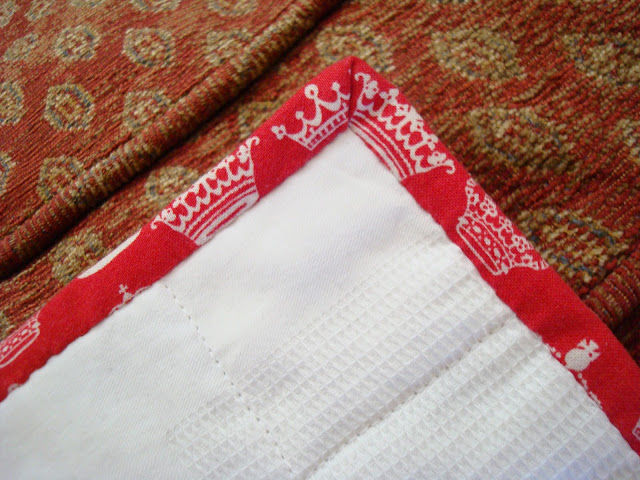Remember my to do list?
Progress so far:
Machine baste around the outside of the quilt a quater of an inch from the edge of the quilt topTrim away the excess backing and batting and square upCut two and a half inch strips of the red fabric for bindingJoin strips using 45 degree seamsAttach bindingWash, line dry and press
That's right! Only a few minutes ago I put the final stitches into the binding on the quilt. Thank you to follower Ken who explained how to make my hand stitching invisible.
 |
| Finished log cabin cot quilt (thank you to The-Much-Belovéd for holding it up so well) |
 |
| Detail of quilting and binding back and front |
 |
| How's that for a mitre? |
Well that's another project completed. I will need to wash the quilt before I post it off to it's new owner. I now have the excitement of starting a new project. I wonder what's next...


























